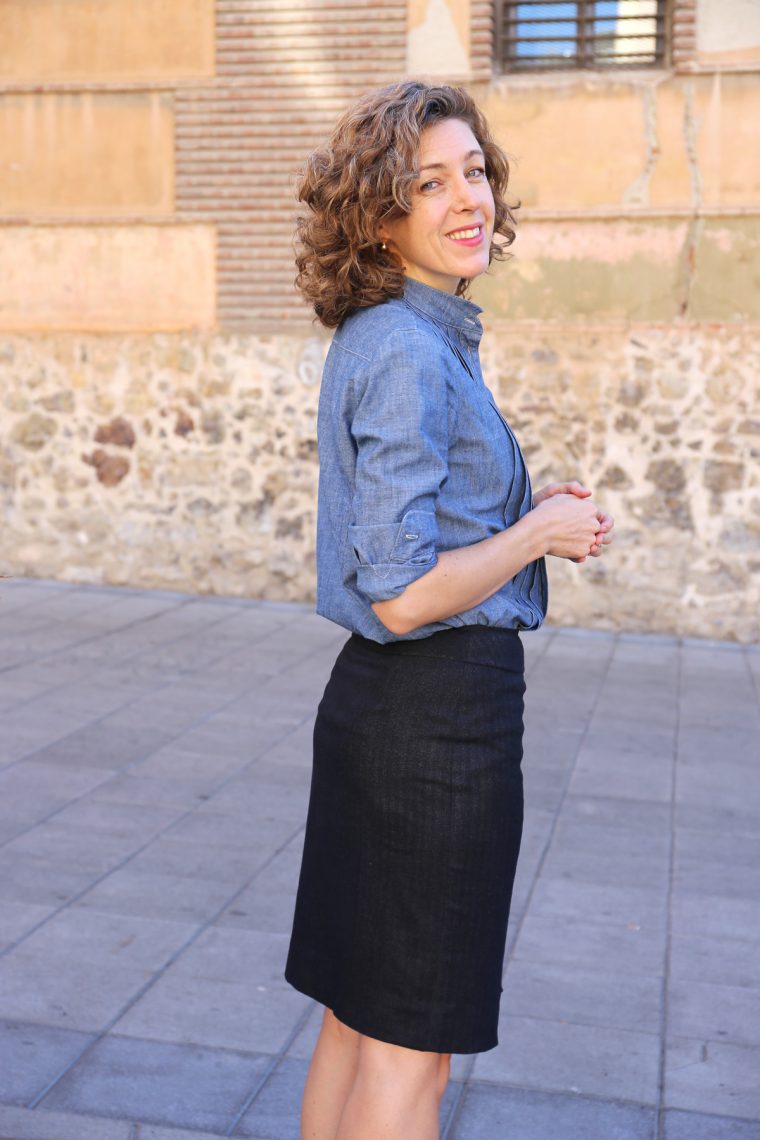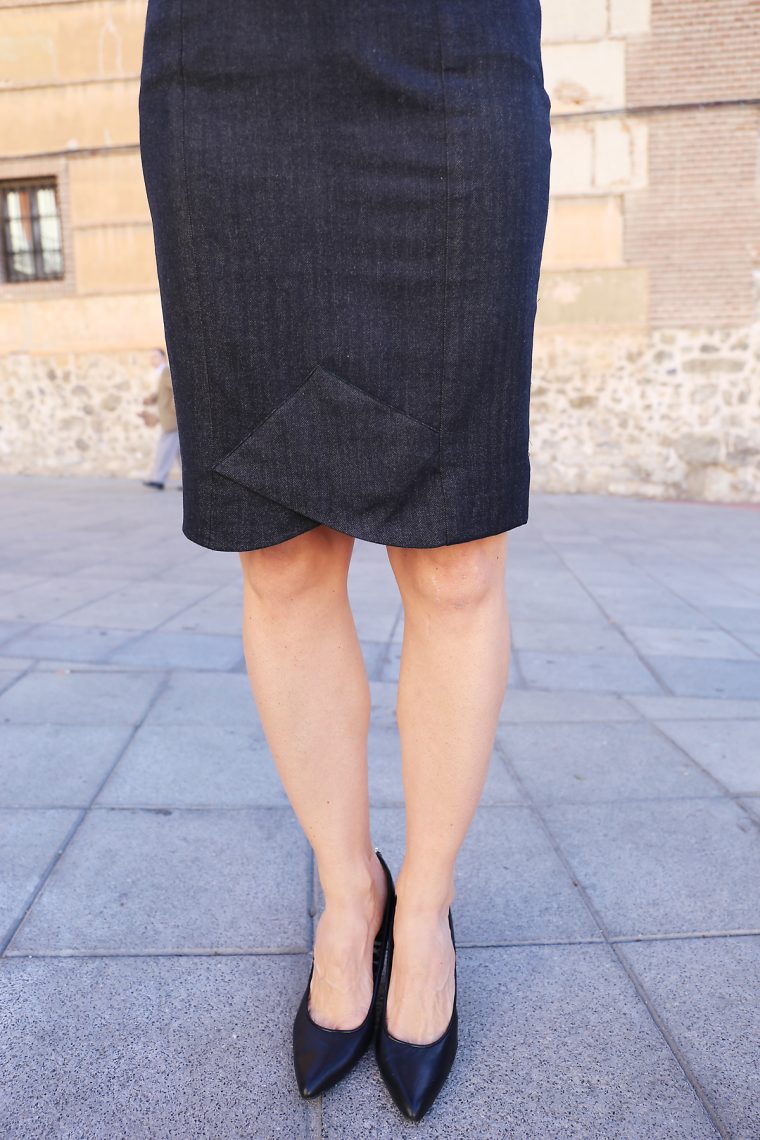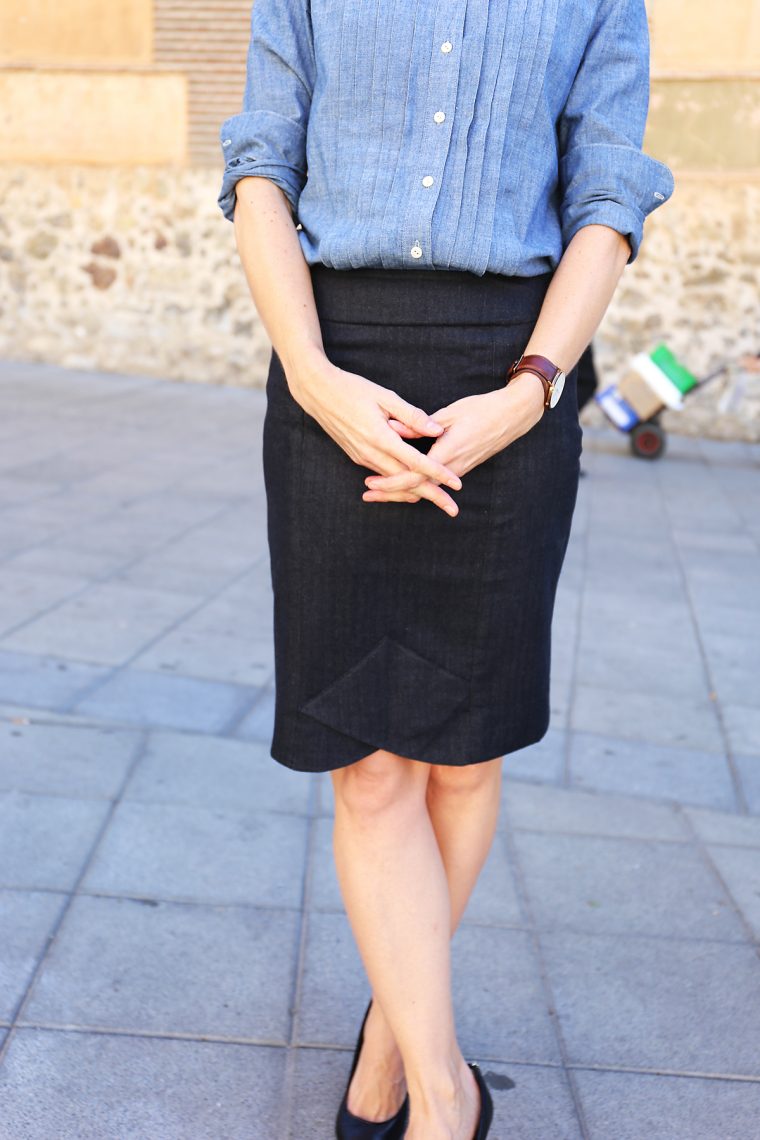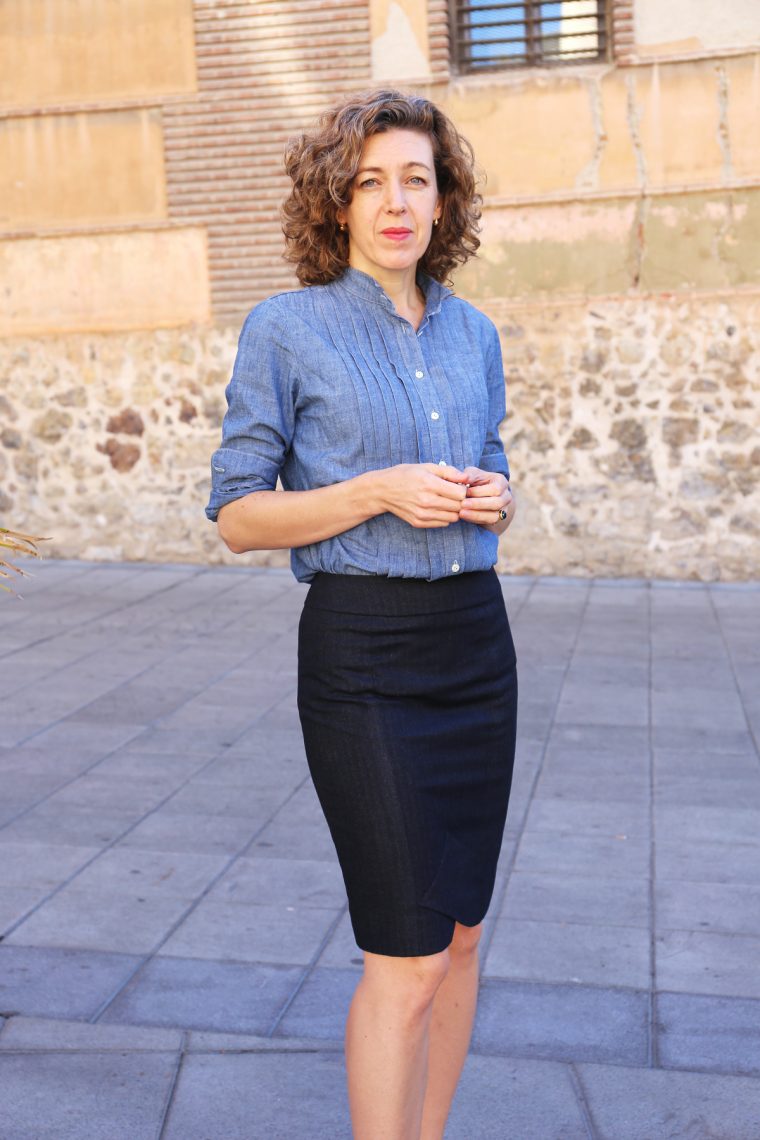liesl’s lisette for butterick B6493 pencil skirt
I have to admit something—I think it will help you create better-fitting garments. (If you've heard me mention this before, bear with me, as it's worth repeating.)
My little secret? I don't always stick to the recommended size based on my measurements. For instance, while I typically fit into a size 12 in Butterick patterns, when working on the Lisette for Butterick B6493 pencil skirt, I decided a size 10 would provide a closer fit, which is exactly what I wanted.


How did I decide on the size 10? Well, I tend to alter most pencil skirts I buy to enhance their fit, as they often require tweaks to look just right. I recently read an article about making minor adjustments to ready-to-wear pieces, and I agree—clothes often look better when tailored slightly. I usually adjust the hips on my skirts to achieve a more flattering silhouette. To determine the appropriate size, I measured my favorite skirts and compared those numbers to the finished measurements listed on the pattern pieces. On Lisette patterns, these measurements are printed directly on the pieces themselves, whereas Liesl + Co. patterns include them in a separate chart on the envelope back. After comparing, I found that my ideal measurements aligned more closely with a size 10, so that’s what I went with—and guess what? No further adjustments were needed after cutting out the smaller size!
It’s a bit tricky to spot the subtle detail at the hem with this fabric, but isn’t it more enjoyable when garments have hidden surprises? Sometimes the best details are the ones you discover upon closer inspection.


Now, I know some of you might argue that the measurement chart is incorrect, but I think it’s just a matter of personal preference. I generally prefer less ease in my skirts, though I tend to opt for a looser fit when it comes to tops and blouses. Looking at the finished measurements can be incredibly helpful when selecting your size, but sometimes you won’t truly know until you’ve made a muslin. (I do that quite often!)
For more guidance on choosing your size, check out this detailed post. You can also explore our Learn to Sew resources under the tab at the top of our website for additional tips. Remember, fit is personal, and you might need to experiment with a muslin to perfect it.
**Pattern Details**
Fabric: A super-soft mystery fabric that resembles herringbone cashmere but feels like polyester—it’s probably the latter, given the price point.
Pattern: Lisette for Butterick B6493.
Notes: For the waist, I used the construction method from our Liesl + Co. SoHo Shorts + Skirt pattern, which is my go-to technique for creating a waist without a traditional waistband.
That’s all for now. Have you tried this pattern yet?
[Insert Adsense Ad]
---
**Related Posts:**
(Your Related Posts section goes here.)
---
Let me know if you'd like any further tweaks or additions!
Surfing wetsuits focus on flexibility, waterproof and warm. Surfers surf in all seasons, so they will choose different thickness and different configuration of wetsuit according to different seasonal climate. In the summer, rashguard top and thinner wetsuit is most popular for surfers choosing. In the winter, thicker wetsuit will be choosed and the thermal linning and sealed will be asked to keep warm. Unlike diving activities, surfing is a activity on the water. There is no high requirement for the resistance of the pressure of seawater. The elasticity and warmth performance are extremely important.
Surfing Wetsuits,Surfing Suits,Surf Suit,Winter Wetsuit
Shenzhen Seaskin Sports Goods Co., Ltd. , https://www.seaskinwetsuit.com